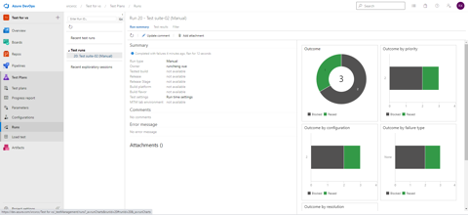
YouTube | LinkedIn | Facebook | Twitter | Pinterest
Having a proper software test strategy is crucial to consistently maintaining a high-quality level for your organization’s software. Unfortunately, many businesses put software testing at the bottom of their priority list, and some don’t even have a software test strategy.
So we thought we’d compile the ten elements you should consider to get the best software test strategy possible.
1. Keep documentation at the “right’ Level, and ask why?
We have seen the advantages of Agile versus waterfall in our precedent post. And often, people talk about Agile, as agile means no or little documentation. However, as far testing goes, there are quite a few testing artifacts like test cases, defects, and test plans that need to be considered in your testing strategy. Therefore, keeping the documentation at the right level is essential for a successful software test strategy. Of course, the “right level” depends on the organization and the maturity level of its testing.
For example, if there are several people on the test team and the business wants them to execute each other’s test consistently, then we need test cases that are written in a consistent manner so different team members can follow them. Otherwise, the organization gets one test case that is written in a very granular fashion, maybe too granular, while another test case might be written at a very high level that another tester cannot follow.
The following crucial point of a successful software test strategy is to look at the defects and focus on analyzing them.
2. Do defect analysis to find where to put the team effort
We must look at the root cause of these defects and determine where most of them occur in the software, when they occur and why. Then we can get toward improving rather than just fixing defects.
The next point to consider is getting a good picture of your requirements and analyzing them to see if they are testable.
3. Do requirements analysis to determine testability, clarity, and completeness.
If your requirements are not testable, then a developer does not really know how to approach developing that feature. The latter might not be complete or clear regarding what passes or fails. Therefore, it’s important for testers to really understand and develop the requirements so that they can be tested and developed properly.
☞ You might also like: Key difference between agile and waterfall
4. Work closely with developer/collaborate for unit testing.
Everybody talks about unit testing. As testers, perhaps we don’t know precisely how to write code for unit testing. But we can work with developers on precisely what each function should entail and the different subfunctions of the features. That will allow testers to know what the features should do, both in a positive sense and a negative one (what the features, or users, should not be able to do).
5. Analyze customer support
This is an overlooked element in software test strategy. Indeed, an organization can extract rich data from analyzing customer support tickets to determine where users have problems. So, we highly recommend looking at that crucial source of data. For example, if users are getting confused, we may need to look at these areas. Maybe they are not clear, ambiguous and so on.
The next one on our list of elements for a successful software test strategy is automation.
6. Develop an automation strategy to prioritize according to what makes sense
Automation is another topic that businesses often talk about. These companies sometimes use such terms as “we want to automate that many percent” and so on. But every company and every software is different, so we need to look at each individually. Indeed, some lend themselves very easily to test automation. In contrast, others might not be suitable for automation because of their architecture level and the complexity of how the functions interact.
7. Conduct performance test early using realistic scenarios and API testing
7.1.1. Performance test is essential for a great software test strategy
Performance test has to be realistic and should be done early. We need to think about the top 3 activities end-users would do. For example, in a financial application, one of the things might be doing an account receivable report. This is an illustration of an activity end-users are doing every day.
7.1.2. API test
Another aspect we want to make sure we undergo is API and database testing. These can be done before the software is actually finished. If we take realistic scenarios, e.g. our finance example of a journal entry for accounts receivable, we need to think about what part of the database does that touch. The simulation can be carried out via database calls to ensure our software performs at a high level underneath the actual application.
8. Conduct usability tests early via the hallway and 80/20 heuristics
Many people talk about usability testing and maybe think it’s a bit too complicated to do, but it can be done very quickly. It does not need to be expensive or involve things like “focus groups” or “the need of an official usability company”. All these are not required. Instead, just bring somebody in your office (what we call “hallway usability testing”), then take your iPad/mobile phone out, and let your co-worker go through the application for five minutes, assigning them a task. Then watch them go through the exercise and see if they get confused or complete the job in a reasonable amount of time. That kind of usability testing, what we call “80/20,” will get you 80% of what you need to know to improve your application, at only 20% of the effort, the time, and the cost.
9. Conduct security test early
As mentioned previously with usability testing, the earlier security testing is carried out, the better it is. Since nobody wants to be in the news, it’s essential to conduct security testing early to understand the company’s vulnerabilities and correct them before the code is released. It is not necessary to wait until the very end to do things like vulnerability assessment. The earlier a company can carry out these tests, the better off it will be. For example, it can create a security user story as part of its agile process. Such a user story could be a vulnerability assessment, or it could also be simulating a malicious user trying to do something.
10. Ensure platform compatibility with a coordinated strategy.
There are still many issues to be solved with platform compatibility:
- The number of operating systems,
- The number of end-user devices, etc.
Moreover, depending on its market, every company’s software will have a different user group with different user-profiles and different operating systems. If we multiply all these factors out, the platform matrix becomes very large very quickly. Therefore, we need a clear software test strategy on when to use real devices, simulated devices, and cloud devices.
In conclusion, the organization needs to think about all this upfront when elaborating its software test strategy so that when it’s time to do platform compatibility testing, it can be done in an organized, cost-efficient way.
You can find us on:
YouTube | LinkedIn | Facebook | Twitter | Pinterest
You might also like:




Leave A Comment